Behold the Lamb Passover Web Supplement
The “Day” of Passover?
Why does Judaism teach that the first day of the Feast of Matzah is the “day” of Passover (or that the seven-day Feast of Matzah may also be called the Feast of Passover)? There is no doubt that the Feast of Passover and the Feast of Matzah are closely linked in the Scriptures, and not just because of their chronological proximity to one another. Their complementary commands concerning abstention from leaven and the eating of matzah also blurs the lines of distinction, in one sense. There are also several passages of Scripture which, at first glance, contribute to muddying the waters of understanding.
Deuteronomy 16:4, for instance, speaks about a “sacrifice at evening baYom HaRishon (on the first day)” in the context of a discussion about Passover and the Feast of Matzah. If this sacrifice is a reference to Passover, one solution to the apparent discrepancy is to translate rishon not as “first,” but as “before,” “former” or “previous” (there are examples of translating rishon in similar manner in various Scripture translations, i.e. “former” in Nu.21:26, NIV; “formerly” in Ge.13:4, NAS; “past” in De.4:32, ESV/KJV; “[the] one in front” in Ge.32:18(17), TNK; and more). This would then cause the phrase “on the first day” to read “on the previous day,” or similar. Another possible explanation for the alleged disparity is that this verse may not be referring to the Passover at all, but to the offering prescribed for the first day of the Feast of Matzah (Leviticus 23:8).
Matthew, Mark, Luke and John have also notoriously contributed to the nebulous nature of Passover. In Luke 22:1, Passover and the Feast of Matzah are apparently considered to be synonymous. John’s chronology of events, especially in 18:28-29, also appears to make Passover and the first day of Matzah interchangeable, thereby ascribing the characteristic of “day” to the Passover. Given that the audiences of both Luke and John were Gentiles, these discrepancies may be attributed to the authors’ perceived need to simplify the Jewish calendar for a Gentile audience; or it may be a reflection of first-century perception—that Passover and the Feast of Matzah were celebrated as one, continuous Feast.
Other incongruous passages include Matthew 26:17, Mark 14:12 and Luke 22:7, which appear to depict the preparation of the Passover on the first day of the Feast of Matzah—a timing which, again, is wholly inconsistent with the plain instructions of Torah. This contradiction ought to be evident, as Luke refers to it as being “the day… in which it was necessary [for] the Passover to be sacrificed,” that is, according to Torah, the day before the Feast of Matzah (Exodus 12:6, Leviticus 23:5-6, Numbers 28:16-17). One possible explanation for the seeming incongruity is that, with the absence of the word “feast” in each of the passages, azumon (“matzah”) may merely be referring to the act of ceasing from eating leaven, which would have begun the evening before the Feast of Matzah with the commencement of Passover (and perhaps even the hours leading up to it).
Though the aforementioned Scripture passages may be used to argue the idea that there is indeed a “day” of Passover, I have offered several plausible explanations for this traditional misunderstanding—a viewpoint which is at odds with the plain instructions of Torah. In the end, the most likely explanation for how Passover came to be known in Judaism as a “day” is convenience—shorthand. With the two feasts being so closely related—chronologically as well as thematically—human reasoning finds it convenient to assign them a single label. Once our minds turn the Week of Matzah into “the Week of Passover,” it naturally follows that the first day of the feast mistakenly becomes “the day of Passover.”
